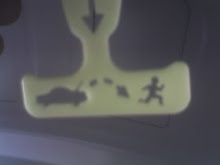First off, what sparked this renewed effort to move my User folders? Last year I installed an SSD in my system, and was blown away at the sheer performance that it provided my system. My system is a decent system, and most certainly was nothing to laugh at when it was built 3 years ago. Alas, the ravages of time. What started as a machine built with a CPU that was 1 generation old has now become, even with all the upgrades, a machine that, for all intents and purposes, has a 4 generation old CPU.
So, I casually came across an article that said I could move my User folder - and when it comes to such good articles, I usually trust the source, http://lifehacker.com/5480138/profile-relocator-moves-windows-profiles-to-a-new-location. So, I went and looked at the tool, by one Joseph Cox, located at http://software.bootblock.co.uk/?id=profilerelocator, and I saw something that made me stop.
According to the description:
Profile Relocator is a step-based application that allows the re-locating of the Windows Users profile directory. Once re-located, any created profiles will appear in the new location in their entirety. The advantage to doing this allows profiles to be stored in a location that doesn't reside on the system drive, ensuring that profile data isn't compromised as a result of re-installation or system failure.Awesome. Now I can easily move my Users folder. However, how do I do this?Profile Relocator has been designed to work with Windows XP, Vista, and 7.Please note that this application should ideally be used on new installations of Windows; PR should be used, and then the final profile should be created. See the included documentation for step-by-step information. PR will not move existing profiles as this can be dangerous.
From the text file included inside the downlaoded zip, we get the following:
USAGENice, eh? But this whole mess of creating a throw-away login is for the birds. Especially in light of the next part. :D
-----
The application contains the required information on how it works, but below is a brief recap on what you should do. Please note that if the "re-installing Windows" step doesn't apply to you, you can just create the new account from your current account. Unfortunately this means you will not be able to create the new account using your current acount's name.
If you're just about to re-install Windows, you should create an account when prompted by Windows during the Windows installation phase using a temporary name. Do not use the name you would like your permanent account to have. For example, use an account name of Test.
Once you've been logged into your temporary account (or main account if you did not re-install Windows), do not install anything except for Profile Relocator. Run PR, read and agree to the the disclaimer in the first step, then select the location you would like all future-created Windows profiles to be located in and click Start.
Once the relocation process has finished, click Finish.
Restart your PC and log back into your temporary account and create your new profile using the User Accounts control panel applet, using the original account name that you wanted. Check the profile destination you entered in PR above and you should see the newly created account in that location.
Log out of your current temporary account and then into the newly created account. Once you have ensured the account is working as intended (no errors being reported by Windows upon login), feel free to delete the temporary account (eg. Temp) that you just logged out of as it is no longer required.
Profile Relocator does not support the location change of existing profiles as is much more risky due to the required number of steps and their complexity.
So, in conducting more research, I found this little tidbit that is really interesting. From http://answers.microsoft.com/en-us/windows/forum/windows_7-files/win7-how-do-i-move-user-folder-to-a-different/565f16a5-e5ed-43c9-8422-4f56aebb296e, step 2:
When the installation stops, waiting for you to give the computer a username and a computer name, DON'T! Press Ctrl+Shift+F3, and the computer will restart in . . . (wait for it!) "Audit Mode"!. Basically, Windows will create a throwaway Administrator account and sign you in, as this throwaway Administrator. Nothing you do, with regard to this temporary user will survive finalizing the installation, but the computer operates normally, and you can install drivers and software. Whenever the computer starts in Audit mode (you are allowed to restart), a GUI version of Sysprep.exe will pop up, offering to restart the computer in OOBE (out of box experience). OOBE is where you were a moment before -- that is, where you create a username and computer name and the installation is finalized. Don't choose to restart in OOBE until you are ready to finalize the installation.And there you have it, folks. With Windows 7's Audit mode, you can have a temporary, throw-away Administrator login to perform all sorts of tasks. These can include, but are not limited to: installing drivers; performing updates; installing applications;
And moving your User profile folder(s).
Neat, huh?
